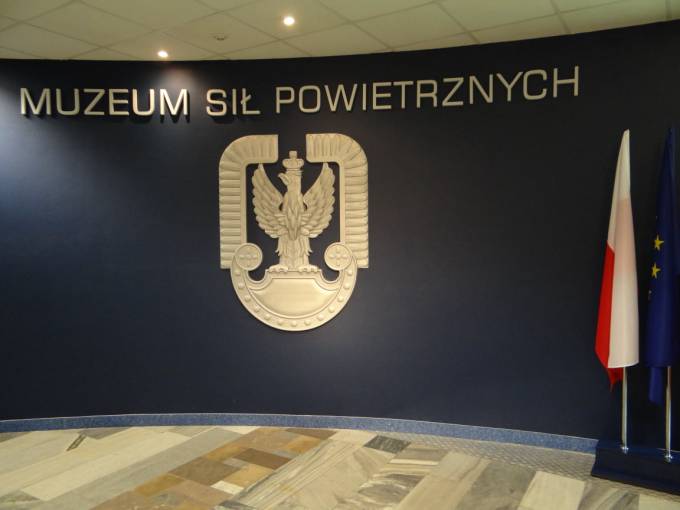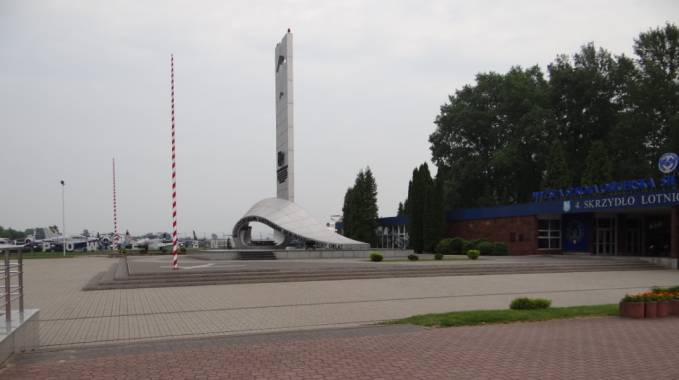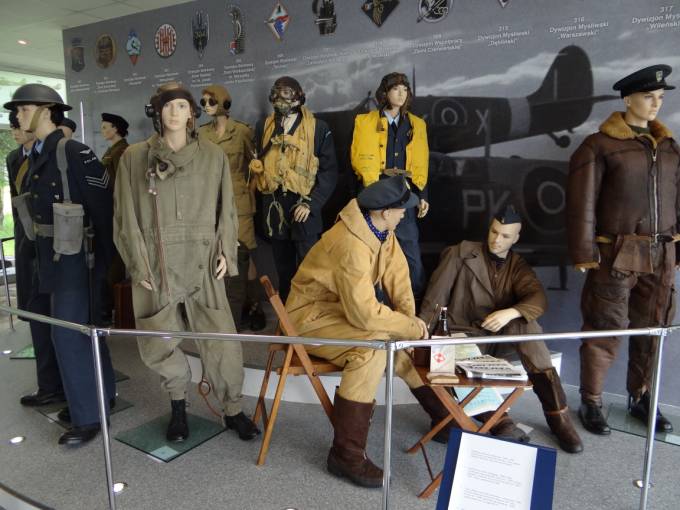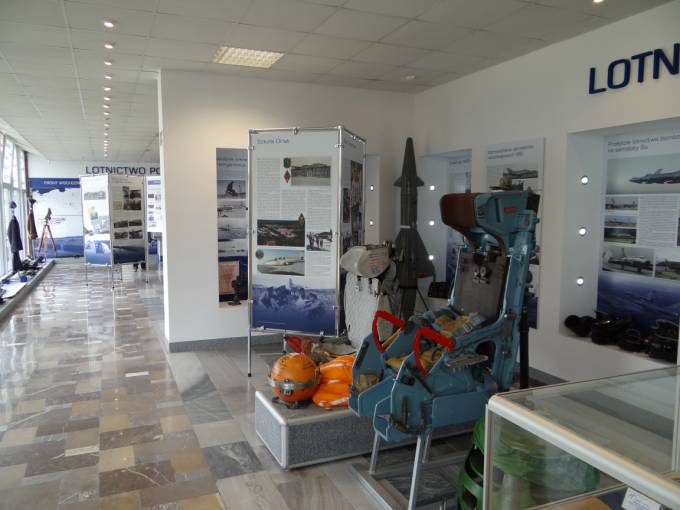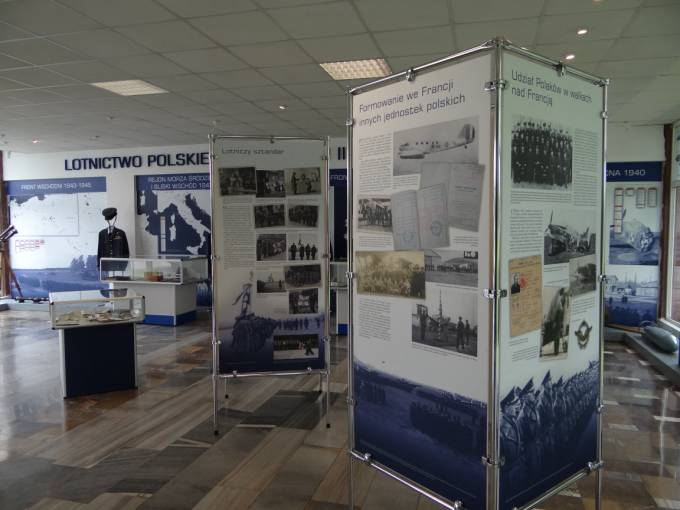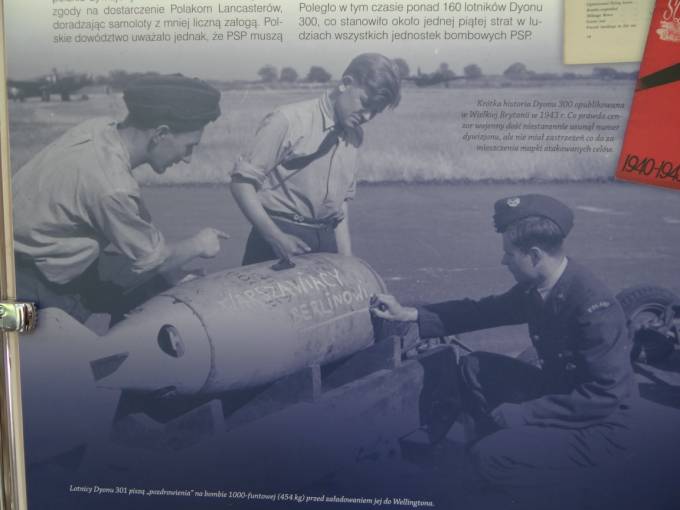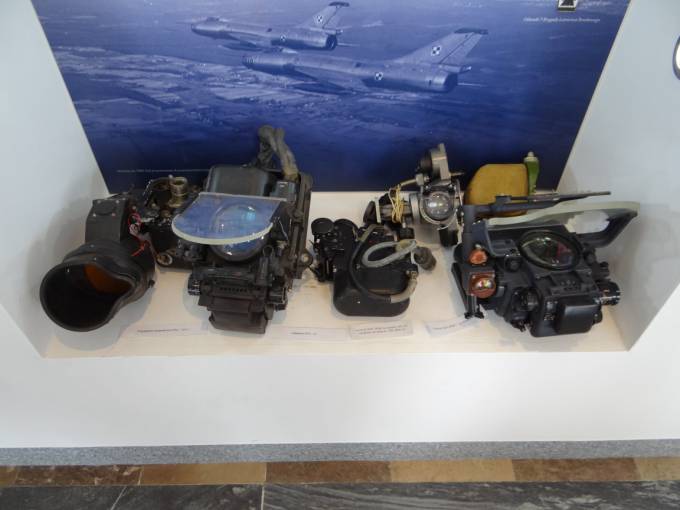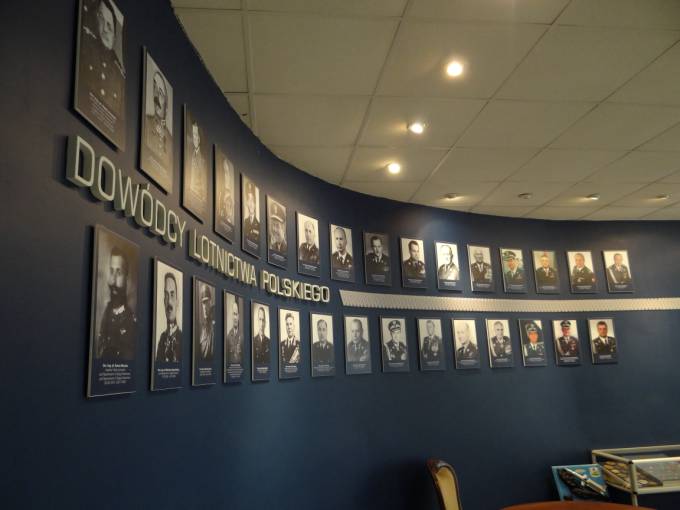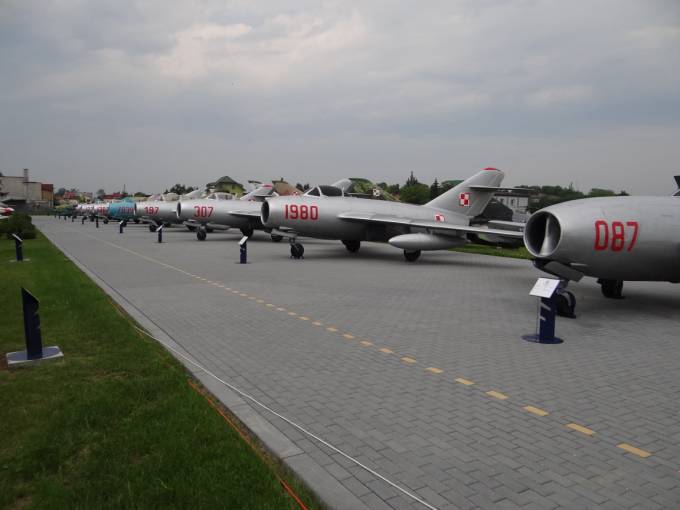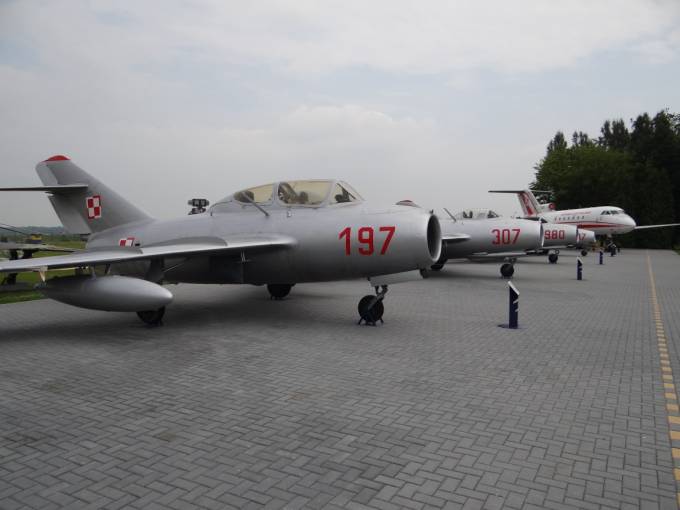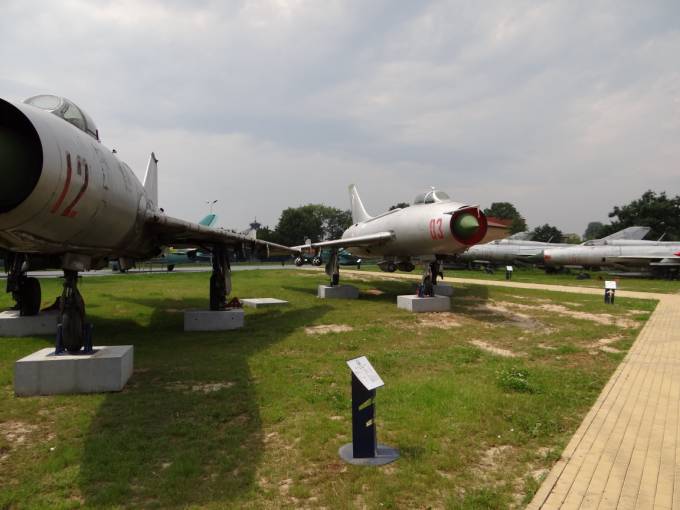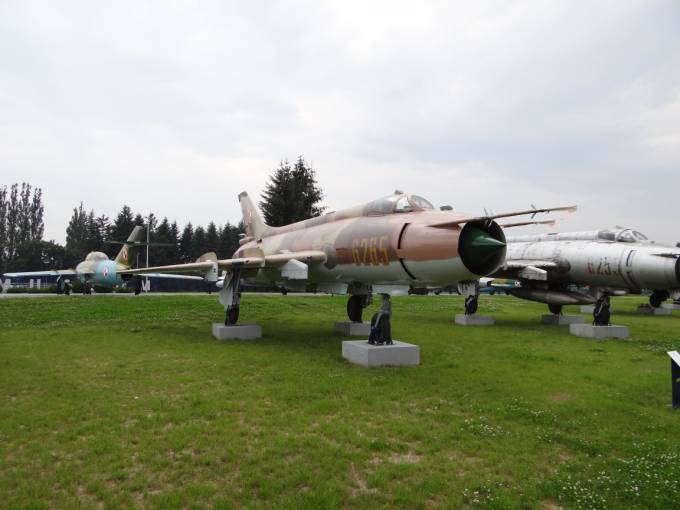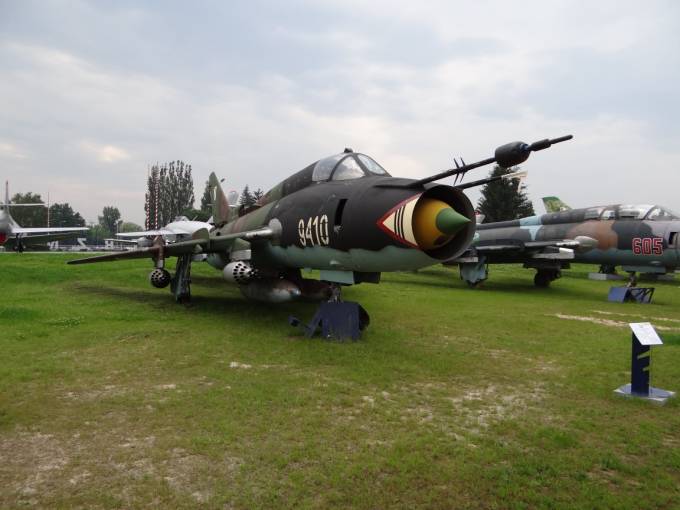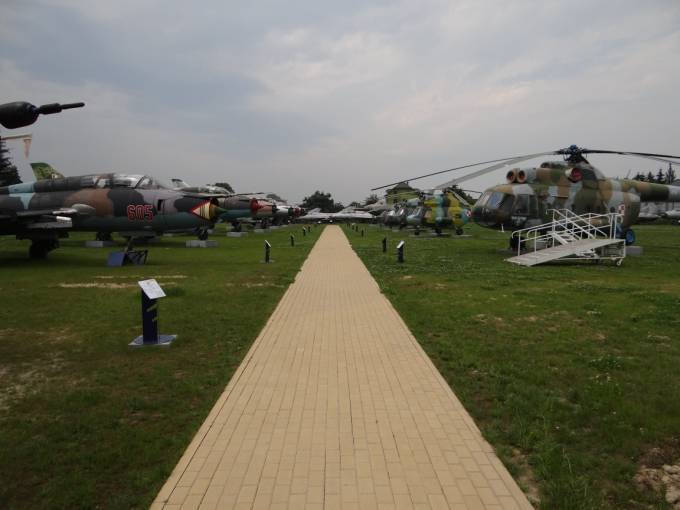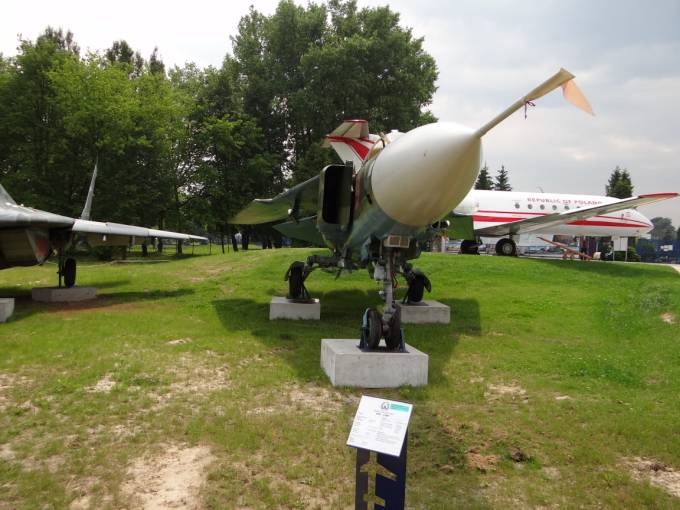Dęblin 2012-08-27
Air Force Museum in Dęblin.
Dęblin airport.
41 Air Training Base.
4th Training Aviation Wing.
Museum of the Polish Air Force in Dęblin.
The Museum of the Polish Air Force in Dęblin is the gun of General Pilot Andrzej Błasik, who was killed in an air attack over Smolensk on April 10, 2010. The museum was opened in 2011.
The idea of establishing the Air Force Museum had a long tradition. Already at the beginning of the 90s of the twentieth century, there were voices on this topic. At that time, at the Mierzęcice Airport, now Pyrzowice Airport, a BSL (flying equipment base) was created, which was unnecessary in service. It was not very clear what to do with this equipment. Some of them were sold to Polish and foreign collectors. Some of them were taken to the Nadarzyce training ground. Some of them were donated to the Polish Aviation Museum. The rest was simply scrapped.
The problem is that many unique copies have been irretrievably lost. And they could be collected at one of the liquidated military airports (for example Sochaczew Airport or Nowe Miasto nad Pilica). The collected exhibits should be divided into two groups. The first group would be machines intended for viewing. The second group should be protected against atmospheric influences and allocated in the future for exchange with other museum centers around the world. Nothing came out of these plans.
Opponents pointed out that the creation of another air-type museum is unnecessary. After all, the Polish Aviation Museum (former Aviation and Astronautics Museum) in Krakow functions perfectly well in the Republic of Poland. There are also other museums of this type. Only that all these facilities are already very limited in area, and aircraft require a large exhibition area.
The change took place in 2007, when General Andrzej Błasik became the Commander of the Air Force of the Republic of Poland. This wonderful man, commander, father of the family and patriot led to the creation of the Air Force Museum of the Republic of Poland. Pilot General Andrzej Błasik said – “The aviation community has long signaled the need to establish a military aviation museum. In connection with the professionalization of the Armed Forces of the Republic of Poland, the broadly understood process of their restructuring (including, inter alia, the replacement of military equipment and weapons) and the important role of military museums in the system of educating soldiers and shaping the image of the army and its promotion in the society, especially among Polish youth. "
On June 3, 2009, a meeting of the Department of Education and Defense Promotion was held at the Ministry of National Defense. During this meeting, the "Concept for the development of military museology in 2009 – 2018" was developed. It organizes the issues of military museology and provides for the creation of a system of military museums for various types of armed forces (and thus the Air Force Museum) with the leading role of the Polish Army Museum.
In September 2009, the Minister of National Defense approved this document.
On this basis, General Pilot Andrzej Błasik issued Order No. 196 of October 28, 2009, on the appointment of a seventeen-person Honorary Committee for the establishment of the Air Force Museum in Dęblin. It was composed of, inter alia, General General: T. Krawczyc, H. Pietrzak, Z. Bielewicz, R. Hać, T. Drewniak, aviation historians: A. Jezierski, T. Krząstek, J. Zieliński, W. Lewicki, and S. Włodarczyk, officers from the Air Force Command, Air Force Academy and representatives of air wings, as well as senior air force associations of military aviation.
The choice of the location of the museum in Dęblin depended on the rich aviation tradition of the Dęblin Garrison, as well as on the premises and the collections already in place. Its branch will be the Air Defense Museum, established on the basis of the tradition hall at the Air Force Training Center in Koszalin.
On December 10, 2009, at the request of the Mayor of the City, Mr. Stanisław Włodarczyk, an extraordinary session of the City Council of Dęblin was held, devoted to the concept of establishing the Air Force Museum in Dęblin. The guests of the Council were members of the Honorary Committee. During the meeting, the assumptions, functioning and financing methods of the Museum were presented. Undoubtedly, all those gathered showed great interest and willingness to cooperate. After presenting the concept of creating the museum, the City Council unanimously adopted a resolution on the establishment of the Air Force Museum in Dęblin. The vice-chairman of the Honorary Committee was also elected Brig. Gen. pil. Ryszard Hać, former Rector – Commander of the WSOSP.
On April 10, 2010, general pilot Andrzej Błasik was killed in the Smolensk attack. Fortunately, for the museum, the machine was launched and the facility was established.
On February 1, 2011, a plot of more than 4 hectares was separated for the needs of the museum. There was a small exhibition of historic airplanes and quite a lot of woods here. Also on February 1, 2011, works related to the construction of the museum started. A total of nearly 50 soldiers and about 40 vehicles and machines from the 16th battalion of the renovation of the Jarocin airfields were sent to them. The works were completed in July 2011. The task of the team was to prepare the area for the open-air exhibition of the newly created museum.
On March 1, 2011, the Minister of National Defense appointed the reserve commander Dr. Waldemar Wójcik, the former director of the Central Military Archives, as the first director of the Air Force Museum. Formally, the museum started its operation on April 1, 2011.
On August 26, 2011, Friday (two days before the Polish Aviation Day), the Air Force Museum in Dęblin was officially opened. The new museum was opened during a ceremony with a military ceremony. It was attended, among others, by many veterans of the Polish Aviation. The first Polish cosmonaut, General Mirosław Hermaszewski, was pleased with the opening of the facility. Czesław Mroczek, Deputy Minister of National Defense, emphasized that Dęblin, the seat of a military aviation school since the pre-war years, is an obvious place for a museum documenting the history of the Polish Air Force. Here is the source of this great tradition and pride. Dęblin has a great past, it means a lot today and will always mean a lot to the Polish armed forces.
The museum is located in the premises of the former hall of tradition of the Air Force Academy, i.e. the School of the Eaglets. In the future, the museum is also to take over the building of the pass office. In total, two buildings with a total area of over 1,000 square meters are planned for the statutory purposes of the museum. The construction of a pavilion for exhibition purposes is planned.
The subject of the museum’s activities is the acquisition and preservation of objects and equipment related to the history and traditions of the Air Force, their proper maintenance and making them available for educational, didactic and scientific purposes, collecting souvenirs and documentation materials, cataloging and researching them, conducting exhibition, promotional and educational activities. and popularizing knowledge about the history of the Polish Military Aviation.The internal exhibition is divided into two parts: referring to the birth of aviation and its development during World War I and II, and the recent history after 1945. The viewer is conducted chronologically throughout the 20th century. Can watch; documents, maps, sketches, photographs, as well as elements of small-sized weapons and aircraft construction and uniforms.
As part of the open-air exhibition, about 50 airplanes and helicopters as well as several other exhibits, including ground radar stations, are available to visit. Most of the planes have already been gathered and displayed at the Dęblin Airport. Some of the exhibits were delivered from the Bydgoszcz Airport and the museum at the Łódź-Lublinek Airport. In the latter case, the museum was limited in area due to the extension of the runway.
In 2012, it was decided to transfer the exhibits from the Radom-Sadków Airport to the museum in Dęblin. It was a very good decision. Simply put, there was no funding for their maintenance. Five planes and two helicopters (Looking from the side of the city center of Radom: I-22 Iryda, Mi-2 and Mi-24, TS-11 Iskra, MiG-21, MiG-23 and Su-22), are already in Dęblin.
A trip to the museum in Dęblin is an idea for spending an interesting weekend for Polish Aviation enthusiasts. While visiting the exhibition halls, we will learn about the history of Polish Aviation. We view unique documents, exhibits and photos.
Fragment of the outdoor exhibition. 2012 year.
There are currently (2012) about 50 aircraft at the outdoor exhibition.
Written by Karol Placha Hetman

